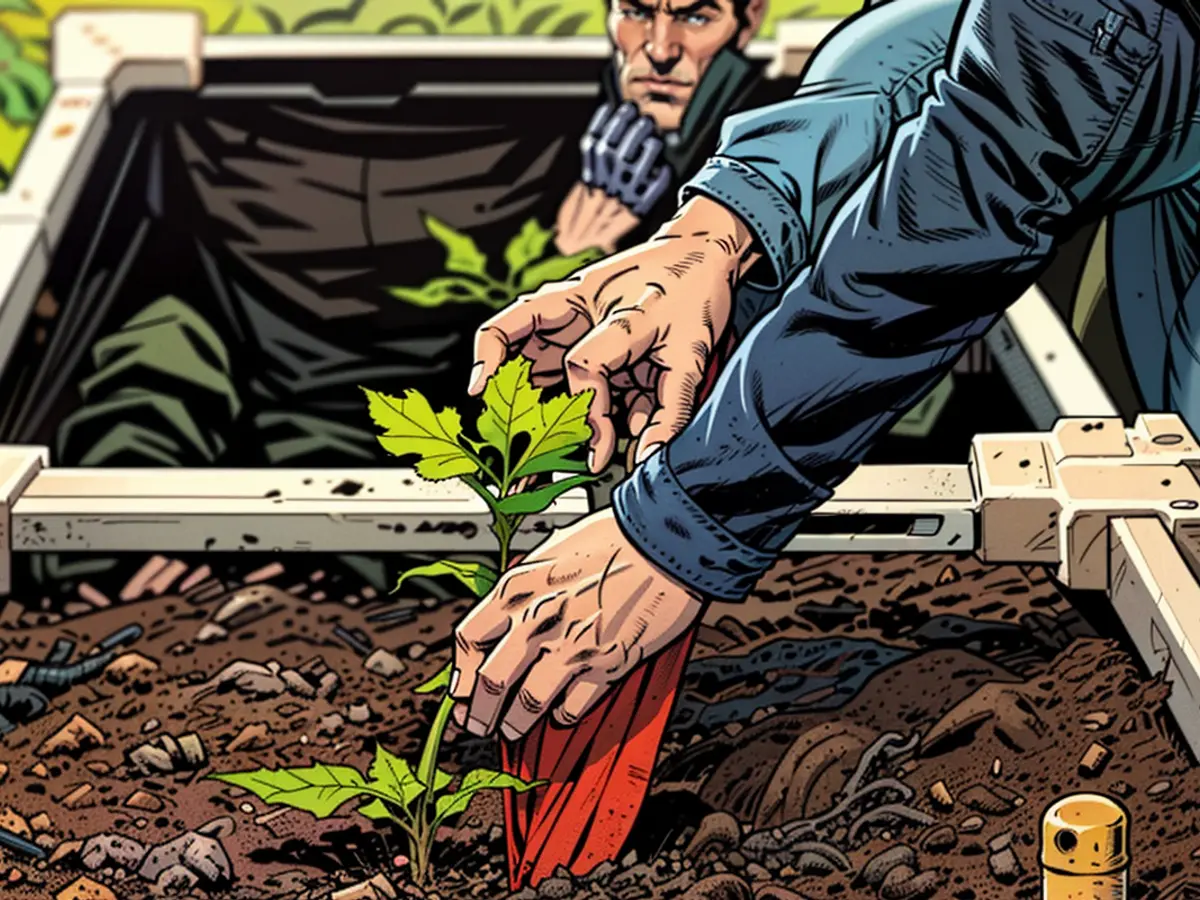Domestic nurseries in lieu of imports. - New existence for the old tree nursery in Großer Garten's garden
The administration of palace gardens in Saxony is emphasizing the reintroduction of nurseries rather than purchasing plants for embellishing their heritage gardens and parks. The renowned Great Garden, frequently referred to as the "green lung" of the state capital, which thrived from the 19th century to World War II, is currently being revived. According to Claudius Wecke, director of the department of gardens at the State Palaces, Castles and Gardens Saxony GmbH (SBG), the first saplings of oak trees have been introduced into the children's nursery, and they will be planted after two years.
On approximately 5,000 square meters, they are creating nursery beds, a nursery, a tree research institute, a tool shed, and a shade house. Initially, Wecke stated that numerous oak tree acorns will be planted to secure the stocks for the oak trees in the facility. Afterward, winter lindens will be brought in for the alleys. Additionally, they will plant scarce, costly species or highly resilient specimens. Historical trees for ornamental garden monuments will also be reproduced and safeguarded.
"Nurseries have always been part of park facilities," Wecke stated. "We're rediscovering what earlier gardeners successfully implemented, updating it with new knowledge, and incorporating it into our strategy for addressing climate change." The consequences of climate change are "strikingly apparent" in the gardens and park facilities, said Wecke, where each year more trees perish, with 390 trees being chopped down in 2023, more than double the quantity from two years prior.
Thanks to a federal-funded project on climate change in historical gardens, "we can take decisive steps and counteract," declared SBG's CEO, Christian Striefler. These trees will thrive better in their specific conditions and will self-propagate, thereby decreasing the chance of spreading plant diseases.
Nurseries have also been cultivated in other locations: in the Moritzburg Palace Garden there are 100 chestnuts for the park alleys, while in the former royal vineyard garden in Pillnitz, they are growing the rare high-stemmed lilac and blood beech for the Schloss Pillnitz pleasure garden.
Read also:
The old tree nursery in Dresden's Großer Garten is being utilized for domestic nursery growth instead of importing plants. The revitalization of the Great Garden, a significant historical site in Saxony, involves planting oak trees from the nursery after two years. Following the oak trees, winter lindens will be introduced for the garden alleys. Additionally, scarce, resilient species and monumental trees will be cultivated to preserve the heritage and address climate change, as emphasized by Claudius Wecke, the department director.
In efforts to combat climate change, similar initiatives are being implemented in other locations, such as the Moritzburg Palace Garden, which grows 100 chestnuts for the park alleys, and the former royal vineyard garden in Pillnitz, which cultivates rare plant species for Schloss Pillnitz's pleasure garden.
The reintroduction of nurseries in palace gardens across Saxony, led by the State Palaces, Castles and Gardens Saxony GmbH (SBG), aligns with their efforts to safeguard heritage gardens and parks. This strategy aims to maintain the resilience of trees in the face of climate change and prevent the spread of plant diseases.
The transformation of historical gardens in Saxony to become more climate-friendly is receiving support from federal-funded projects, ultimately leading to better growth conditions for the revitalized gardens and parks.








